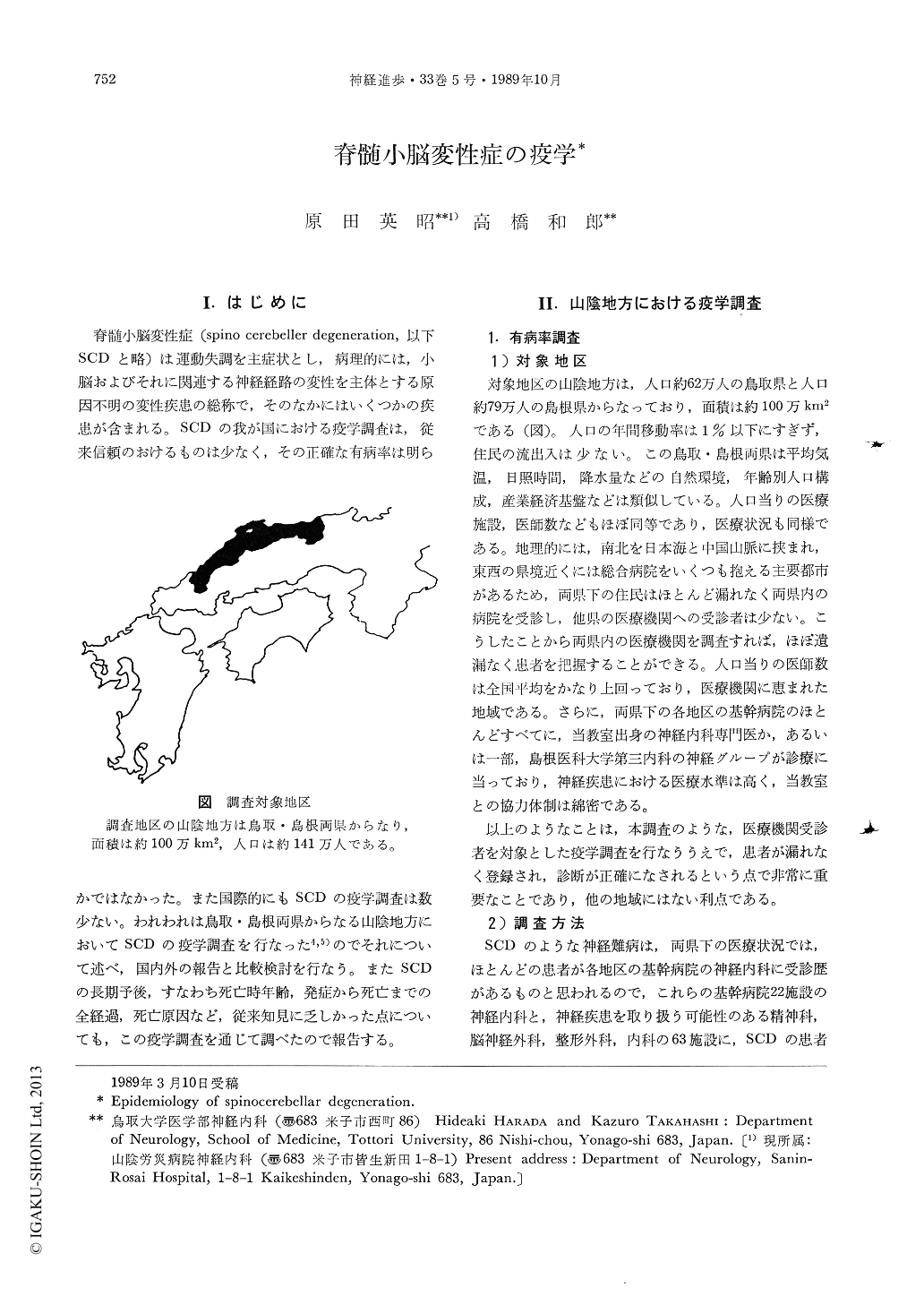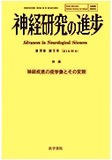Japanese
English
- 有料閲覧
- Abstract 文献概要
- 1ページ目 Look Inside
I.はじめに
脊髄小脳変性症(spino cerebeller degeneration,以下SCDと略)は運動失調を主症状とし,病理的には,小脳およびそれに関連する神経経路の変性を主体とする原因不明の変性疾患の総称で,そのなかにはいくつかの疾患が含まれる。SCD低我が国における疫学調査は,従来信頼のおけるものは少なく,その正確な有病率は明らかではなかった。また国際的にもSCDの疫学調査は数少ない。われわれは鳥取・島根両県からなる山陰地方においてSCDの疫学調査を行なった4,5)のでそれについて述べ,国内外の報告と比較検討を行なう。またSCDの長期予後,すなわち死亡時年齢,発症から死亡までの全経過,死亡原因など,従来知見に乏しかった点についても,この疫学調査を通じて調べたので報告する。
A prevalence study of spinocerebellar degeneration was carried out in San-in Area between 1987 and 1988. On prevalence day, 1988 September 1st, 174 patients were found and the prevalence rate was 12.3 per 100,000 population. When age adjusted to the country's population, the figure was 10.6. These rates was higher than those reported previously in Japan. The prevalence rario for maleand female was 1.6:1. There were 116 patients (66.7%) with olivo-ponto-cerebellar atrophy (OPCA), 8 (4.6%) with Menzel form, 17 (9.8%) with late cortical cerebellar atrophy (LCCA), 20 (11.5%) with hereditary spastic paraplegia, 3 (1.7%) with Friedreich's ataxia, 7 (4.0%) with Shy-Drager syndrome, 3 (1.7%) with dentate-rubro-pllido-luysian atropy (DRPLA). The frequency of the spinal form of spinocerebellar degeneration is rather less and the cerebellar form is more than in other countries.

Copyright © 1989, Igaku-Shoin Ltd. All rights reserved.


